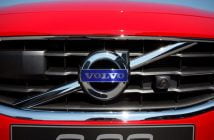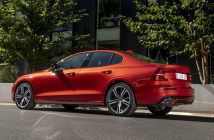+++ Ford’s born-again BRONCO is so popular in the United States that about 100 dealers nationwide are planning to build a space dedicated to the off-roader. It’s not a requirement, but those that do are largely free to design and arrange it how they see fit. “That was something that the dealers asked for because they saw the potential for it, so we developed a program for it”, explained Mark Grueber, the head of the Bronco brand, in an interview. “We offer a whole range of what they can do, everything that we call a pylon to the parts wall for accessories and the display for the Bronco”. He noted some dealers are converting existing facilities (like used cars buildings) into Bronco stores. His comments suggest the Bronco store in, say, Los Angeles won’t look exactly like the one in Denver or the one in Boston. There’s no one-size-fits-all solution, because each market is different and not all dealers have the same budget to play with. Of course, it’s reasonable to assume that every Bronco space will have an outdoorsy vibe. There are nonetheless some guidelines set by the Blue Oval. Ford Authority learned dealers who have unfulfilled commitments or facilities deemed substandard are not eligible to participate in the program. The location of a standalone Bronco showroom must be approved by Ford, and dealers can only use it to sell cars that are part of the Bronco range, which is currently limited to the full-size model and the smaller Bronco Sport crossover. In the coming years, the line-up could grow with the addition of a performance-oriented model and an adventure-ready pickup. Ford is rewarding dealers who invest in a separate Bronco showroom by allocating more SUVs to their store. He added that the extra inventory won’t justify the investment required to build a new showroom, but he expects the move will pay off in the long run because motorists will see stores with a Bronco space as the place to buy an SUV. +++
+++ Finally, after having been announced many months ago, some more specific details surrounding the electric CHEVROLET Silverado are being revealed. The latest is that it will get four-wheel steering. That’s not exactly a revolutionary bit of tech for General Motors’ full-size trucks, but is still a unique feature in the segment. The company speaks about the system in general terms, though we do get a video showing it in action. Some of the benefits touted are high-speed stability and tighter low-speed maneuvering. So it will probably steer counter to the front wheels at low speed for a better turning radius, and then at high speeds the rears will probably steer slightly with the front wheels for stability. We also wouldn’t be surprised if the steering is almost the same as what the GMC Hummer EV is getting. That might even mean the electric Silverado could have Crab Mode steering. Of course, all of these features except for Crab Mode were available on early-to-mid-2000s Chevrolet and GMC full-size trucks. The system was called Quadrasteer and did exactly what was described above. The system was fairly heavy and quite expensive. At the time, it wasn’t very popular, either, with the take rate never topping 2.1%. But in today’s world of high-tech, high-dollar pickup trucks, it could be a lot more successful. One final note: Chevrolet also revealed that 24 inch wheels will be available for the electric Silverado. You certainly couldn’t get wheels that big from the factory back in the 2000s. With concrete details starting to come out from Chevrolet, I’m betting we’ll see the electric pickup revealed in the next few months. The other major details we know are that it will be built alongside the Hummer EV, and it will have a range of up to 640 km. It will use a lot of the same Ultium EV tech from the Hummer and the Cadillac Lyriq. +++
+++ The interior of the 8th generation Chevrolet CORVETTE is full of buttons and lights. One nobody was expecting to find, though, is a glowplug light. That’s right, a light associated with the startup procedure of a diesel engine can be seen just under the check engine light in the instrument cluster of a 2021 Corvette. There are a few amusing suggestions as to why the light might be there. One suggested that it might actually be a donut light, while another suggested that maybe it’s evidence that GM is planning a Duramax version of the Corvette with 15.000 lbs of towing capability, which should help get your race tires to the track with ease. When I asked Chevrolet, a spokesperson told me that the explanation is simple: the light is simply there as a leftover. “We appreciate the speculation, but that symbol was included as part of our standardization process”, a spokesperson told me in an email. “It is not indicative of any plans to add the feature to Corvette and we plan to remove the icon in the future”. So, this is definitely not a cleverly hidden feature, although there’s no shortage of those in the C8 Corvette. Between the seats, a speaker features a subtle Corvette logo on the perforated section. The flags are also hidden in the rear window as the shaded dot pattern at the top of the glass. On the front windshield, meanwhile, Zora Arkus-Duntov, the father of the Corvette, can be seen in the lower corner of the glass. All of which are nice nods to the history of one of the longest-lasting sports cars on earth which might have switched to a mid-engined layout but will, sensibly, not be powered by a diesel engine. +++
+++ LAMBORGHINI posted more teaser photos of the coming Countach resurrection to its Instagram page. I’ll have to let the pictures do most of the talking since I don’t have any more information than I did when the first tease dropped a couple of days ago. We get a shot of a nose unlike any other Lamborghini in the current stable. A narrow black grille just inches wide splits the upper and lower section of the front fascia, recalling the area where the original exotic placed its black front bumper and fog lights. The name “Countach” appears on the right side of the coupe, in all lowercase letters just like the original, but stretched and angular befitting the brand’s modern design language. A second shot exposes the engine cover, this a new design based on the clear cover that can be fitted to the Aventador. Three flat hexagon panels, thickly bordered in black, step down from the roof to the tail. Beneath them is the longitudinal and posterior V12 portion of the LPI 800 powertrain. The initialism stands for Longitudinale Posteriore Ibrido, and we’re still waiting for any information on that last bit, the hybrid. The V12 in the Lamborghini Sian FKP 37 received help from a supercapacitor, but that special edition didn’t get official designation as a hybrid. The last car from Sant’Agata to do so was the 2014 Asterion LPI 910-4 concept from the 2014 Paris Motor Show. The Asterion hid a V10 in back for the rear wheels, and 2 e-motors with a combined 296 hp on the front axle powered by a lithium-ion battery. The Sian produces about 785 hp, the Countach will deliver about 789, the Aventador S makes 690. So Lamborghini isn’t using electricity to chase gaudy numbers. Yet. The last pic presents the area behind the side window. This is a slightly tighter shot of an image that a site called Lamborghini Specs posted a few days ago, snagged somehow from the automaker’s customer-only site, Lamborghini Unica. This reveals a Huracan-like intake treatment, the opening descending from the roof to the rear fenders. Ahead of the intake, a row of slats harks back to Gandini’s Countach prototype that arranged a flat row of vents along the fender, just behind the glasshouse. The fender is decorated with a cap that could be the fuel filler or a charging port or something else. Way back in 1987, Lamborghini worked up a Countach Evoluzione prototype to test new technologies that made their way into the last of the production Countach run and the successor Diablo. This Countach could be doing something similar. The brand has already been taking orders for whatever’s coming, so there’s an excellent chance it will be sold out by the time it debuts on Sunday, August 15, at Monterey Car Week. +++
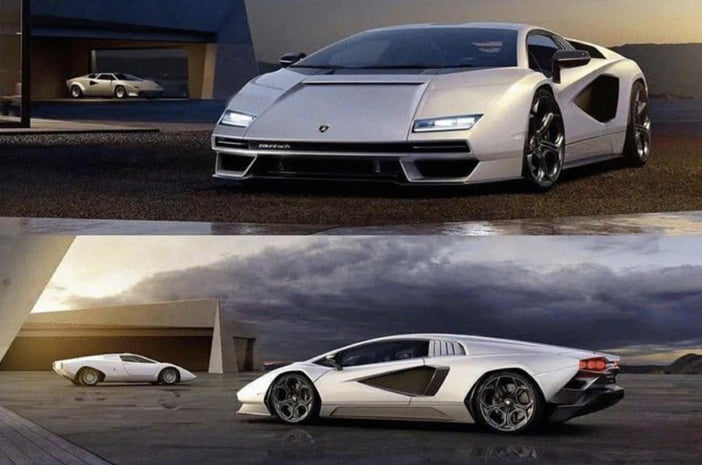
+++ LORDSTOWN MOTORS , which previously warned it needs to raise additional funding, hung the “open for business” sign on its northeastern Ohio plant on Wednesday, saying it was in talks to build vehicles for other automakers or lease space in the factory. Shares of the electric vehicle startup, which also said it will begin limited production of its Endurance pickup truck in late September, rose 6.1% in after-hours trading. “We are exploring multiple partnership constructs. That includes contract manufacturing, that includes licensing”, chairwoman Angela Strand said on a conference call with analysts. “We’re discussing with multiple (automakers) who are interested in exploring how they can leverage the assets that we have”. “This is a critical, strategic pivot for us”, she added. “A decision that we believe will lead to significant new revenue opportunities”. Lordstown, which also announced a second-quarter loss, said its plant in the northeastern part of the state is ready and that retooling of stamping, assembly, body and paint shops has been completed. It also said the electric battery line is fully commissioned. Lordstown will begin shipping the Endurance to select early customers in the first quarter of next year, followed by wider commercial deliveries in the second quarter, she said. Production will increase steeply in the second half of 2022. Strand said while Lordstown will initially target commercial customers, the Endurance also will appeal to consumers. Lordstown president Rich Schmidt said the Endurance uses only 30 % of the plant’s 6.2 million square feet, so there is room for others to build vehicles there or for Lordstown to build them. Other options could include selling batteries or EV platforms to other automakers, he said. Lordstown said it lost just over $108 million in the second quarter. The company had $366 million in cash and equivalents at the end of the quarter, and expected to end the third quarter with liquidity of between $225 million and $275 million excluding any funds from a capital raise. Last month, Lordstown said a hedge fund had committed to purchasing up to $400 million of the startup’s shares over a three-year period. Executives said that Lordstown was exploring other financing options, including debt. Lordstown also will begin earning environmental credits it can sell to other automakers, interim chief financial officer Becky Roof said. It has a deal with minority shareholder General Motors that allows the No. 1 U.S. automaker to buy those credits during the first three full production years at a discount to fair market value. Lordstown faces heightened scrutiny from federal prosecutors in Manhattan and officials with the U.S. Securities and Exchange Commission related to its merger with a special-purpose acquisition company (SPAC) and statements it previously made about preorders for its vehicles. In March, Lordstown’s shares slumped after Hindenburg Research disclosed it had taken a short position on the stock, saying the company had misled investors. An internal investigation into Hindenburg’s claims in June found that Lordstown had overstated the quality of preorders. Lordstown also announced at the same time the resignation of founder and chief executive Steve Burns, the company’s largest shareholder. +++
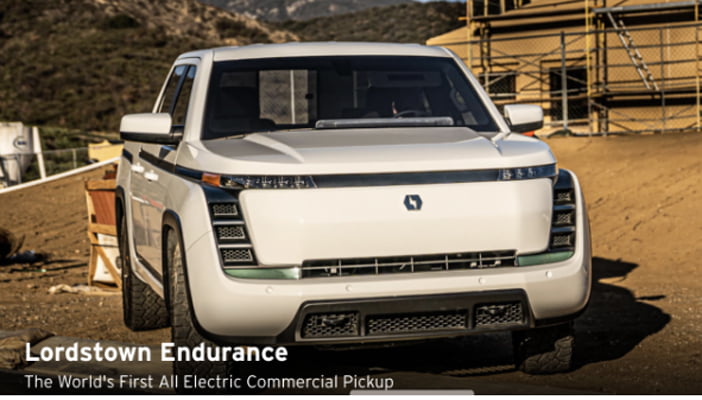
+++ MERCEDES-BENZ has introduced its latest piece of Car-to-X technology that alerts motorists to potholes. The new C-Class, S-Class and EQS can all detect potholes and speed bumps. After registering one, if the ‘Car-to-X Communication’ service is activated, this information is sent to the Mercedes-Benz Cloud in real time through the car’s mobile phone network. Other Mercedes-Benz models in the area are then informed and the pot holes/speed bumps will be displayed with icons on the navigation screen. In addition, the car will ring an audible warning sign about 10 seconds before the pothole/speed bump is reached. Passenger cars built by Mercedes-Benz from 2016 can receive the warning information, as long as they have a Mercedes me account and the Car-to-X Communication service has been enabled. In these vehicles, the warnings will state ‘Traffic event ahead’ while in the new C-Class, S-Class and EQS, the warning will be ‘Look out, pothole!’ or ‘Attention, speed bump’. These alerts are available in a host of markets worldwide in 36 languages. The new C-Class, S-Class and EQS detect potholes when a certain threshold value is reached during sudden suspension compression and rebound. A similar algorithm is used to detect speed bumps, although it is determined through the compression and rebound sequence. Mercedes-Benz also has another Car-to-X function dubbed ‘Crosswind Assist.’ This system is activated in the event of a strong crosswind and helps the driver with targeted braking and steering interventions. The Mercedes-Benz Cloud is also notified, warning drivers following behind of the wind. +++
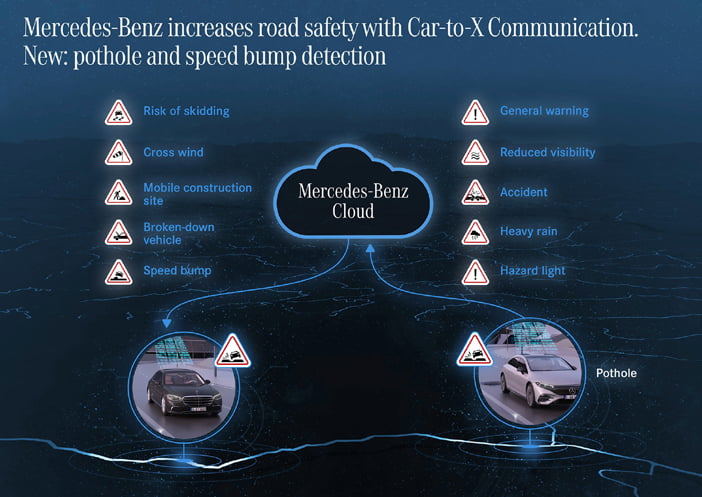
+++ RIVIAN Automotive, the electric-vehicle startup backed by Amazon.com, is in talks to invest at least $5 billion to build a factory near Fort Worth, Texas. The factory (codenamed “Project Tera” according to the document) will be able to produce 200.000 vehicles a year, and will create at least 7.500 jobs by 2027. The presentation, made by the City of Fort Worth’s Economic Development Department to the City Council and dated August 4, also includes a number of incentives including grants and county tax abatement of up to $440 million. The $5 billion capital investment commitment from Rivian includes a minimum $2 billion in real property improvements and $1.6 billion in hard construction costs, the document shows. The company has committed to completing its initial investments by the end of 2024. While a number of states and cities are still under consideration, the Texas site has become the front-runner for Rivian, according to people familiar with the matter. Rivian, and in particular Chief Executive Officer R.J. Scaringe, had previously been keen on a location in Arizona but concerns were raised around the available infrastructure, the people said, asking not to be identified discussing private information. No final decision has been made, and it could be some weeks before a deal is agreed to with one of the cities or states, the people said. Robert Sturns, the director of economic development for Fort Worth, said in an email that the city is “very excited to be a finalist for this project and looks forward to continuing the process”. Sturns told members of the city council during a presentation on Tuesday that several states were still under consideration. The city of Fort Worth believes it offers a number of competitive advantages, including strong access to talent and the “ability to stand up production fast”, it said in the document. Texas, with its growing tech economy, access to ports and proximity to suppliers in Mexico has led some to call it the Detroit of the south. Toyota’s North American headquarters are in Plano and Elon Musk’s Tesla is building a new vehicle factory in Austin that’s slated to be completed later this year. Rivian didn’t immediately respond to a request for comment. The Irvine, California-based automaker is among the most promising of a large pool of EV startups trying to catch up with Tesla. The company has caught attention with its planned battery-electric pickup and SUV and a deal to build 100.000 electric delivery vans for Amazon by the end of the decade. It has raised more than $10.5 billion from investors including Ford and T. Rowe Price. The company already operates a factory in Normal, Illinois, but recently delayed the start of production on its debut EV due to supply-chain disruptions. The proposed 2,000-acre Walsh Ranch site in Texas is located 12 miles southwest of downtown Fort Worth. Upon completion, the plant would include 12 million square feet of vertical construction. Rivian will ensure minimum average annual salaries of $56.000. +++
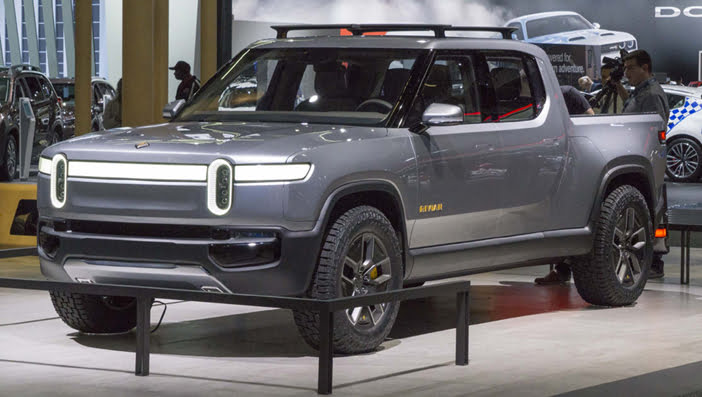
+++ VOLKSWAGEN North America is receiving $1 billion in investments by 2025 as part of its electric mobility and digitalization push that will see it increase output by 30 % at its facilities in Puebla and Silao, Mexico, as well as Tennessee, U.S.A. The digital push will see it invest in better software, optimized artificial intelligence, and improved robotics to help increase efficiency at its factories. “We’re pushing our ambitious digital transformation to make Volkswagen’s factories in the North American region more productive, connected, and more sustainable than ever before”, said Johan de Nysschen, COO at Volkswagen Group of America. “Our digital transformation also supports skilled labor and high-profile, future-proof jobs throughout North America at our sites in Chattanooga, Puebla, and Silao”. A global industrial cloud-based IT platform will help the company boost manufacturing by sharing data connections, as well as real-time information and software for industrial machines. With 13 global suppliers and 21 Volkswagen Group plants already on the cloud, it should make improving how the machines work much easier. The company has more than 50 projects being disseminated through a cloud-based app, and its North American sites are already looking to deploy an intelligent conveyor motor monitoring app that can reduce downtime and support predictive maintenance. In Puebla, smarter robots that work with employees have already been deployed to keep an eye on panel gaps. The robots can perform 26 checks in less than a minute and will soon be able to check welding patterns to ensure that vehicles are built as well as possible. Finally, new tools developed in-house at Volkswagen’s AI Detroit center are set to help supervisors better manage schedules in Chattanooga. The tech is designed to help make it easier for managers to track training levels and time off. “We need a production network that is just as advanced as our future vehicles for North American customers”, said Susanne Lehmann, Senior Director Production, Volkswagen de México. “Through our work we already see not only the value of what’s been implemented but the promise of what’s to come”. +++
+++ VOLVO Cars, owned by China’s Geely Holding, will temporarily stop production at its Swedish plant in Gothenburg due to the shortage of semiconductor chips, it said. A global chip shortage has hit manufacturing, with automakers cutting down on production and electronic device makers struggling to keep up with a pandemic-led surge in demand for phones, TVs and gaming consoles. “Production at Torslanda will be paused temporarily from this evening due to a material shortage linked with the semiconductor issue”, Volvo Cars said in an emailed statement. “Production will restart as soon as possible, at the latest before next week”, the Swedish carmaker, which in June halted production at its Belgian plant in Ghent for a week, said. Volvo Cars, which last month reported a return to profit in the first half as demand for electric cars grows, is considering listing on the Nasdaq Stockholm stock exchange this year. +++

